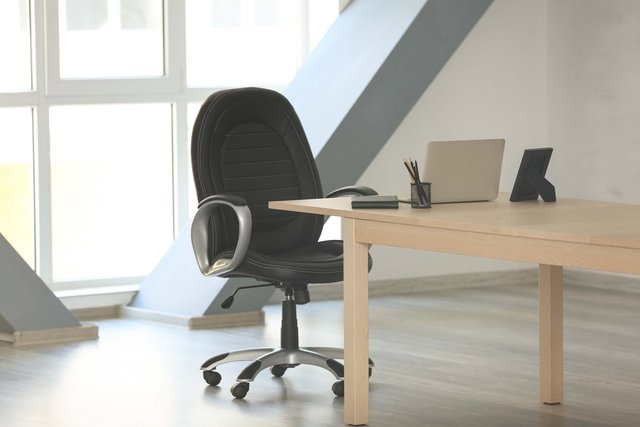Introduction
Whether working from home or in an office, a good sitting posture is essential for health. It not only assists in preventing back and other health problems but also adds physical energy for a pleasant working environment. Your muscles help your body to work more effectively when you maintain the appropriate posture for long hours.
Poor posture also has an impact on your emotions, which ultimately leads to poor performance. Obviously, we all have bad or non-ideal postures at points in our daily working routine, and we hardly observe if our posture isn't ideal all the time.
However, when it comes to our office sitting posture, we should be a little more concerned about health because we spend most of our time sitting at our desks. If you want to know how to improve posture while sitting at work, keep reading the article as we have composed a list of factors in detail and tips to keep you healthy and in good shape.

Drawbacks of Bad Posture
While most of our office work is switched to advanced technological equipment, adopting a bad posture is unavoidable. However, bad posture is more than a minor daily issue; it can have long-term harmful effects on our bodies. Research has shown that wrong posture can negatively affect our body and mind, and that's why it is essential to take good care of yourself and emphasize good posture.
A person with poor posture is seen as having low self-esteem and confidence and causing long-term health problems. Back and neck discomfort, among other disorders, are directly affected by the physical damages.
Some of the major Consequences of Sitting on the wrong chair or with a bad posture are:
- Digestive Problem
- Breathing problems.
- Poor blood circulation
- Increased body fat and weight gain
- The body's elasticity is deteriorating.
- Muscle imbalances are created in the body.
- Decreased concentration and increased fatigue
- Neck, shoulder, and back pain are more likely to occur.
- Getting in the way of your equilibrium and raising your chances of falling.
- Your spine will be subjected to additional wear and tear, making you more vulnerable to injury
Effects of Good Postures
Good posture refers to the proper alignment of your body when standing or sitting. Correct positioning involves training yourself to hold your body against gravity with the least strain and tension on supporting systems, such as your muscles and ligaments.
Sitting with proper posture helps you avoid neck, shoulder, and back pain by distributing weight more evenly across your muscle groups. It also allows you to work for extended periods of time while avoiding some major long-term health issues.
A chair feature with lumbar support will assist you in maintaining proper back posture.
Now that we know that what good postures is and how much this is essential for us, some other benefits are given below:
- Muscle weariness is avoided.
- Keeping the risk of back pain to a minimum
- Keeping the spine from becoming stuck in a bad position.
- Maintaining optimum alignment of your joints and bones.
- Ascertaining that muscles are used effectively and efficiently.
- Assisting in the reduction of excessive wear and tear on joint surfaces.
Tips to improve posture at Work
Here are few tips for your body position to make sitting at work for long hours much easier for your body and improving posture:
- Bend your elbows at 90 degrees while typing
- Maintain a little gap between the back of the knees and the chair.
- Avoid slouching and gently roll your shoulders down and back
- Use a proper office chair that supports the lumbar spine with a cushion
- Without straining the neck, sitting up straight and looking front.
- Keep feet flat or resting them on the floor, or use a footrest to avoid crossing knees or ankles.
- Sitting for long periods of time should be avoided, with at least a 10-minute break for every hour spent sitting.
What Kind of Chair you Should Use?
When you work in an office, you'll almost certainly spend more time sitting. Forget about the office; even sitting in the same position at home for an extended period is harmful to your spine.
A traditional chair is not the same as an office chair. It's designed according to your body's primary structures, which are prone to becoming strained while you're working, a complete rest.
Following are some feature that you should expect from the best office working chair:
- An office chair should provide you comfort and support your body structure while sitting.
- It should be more comfortable than regular chairs because they are to be used for long hours.
- Seat adjustment options, especially height.
- A 12 to 19 inches wide backrest.
- Seat width and depth according to the user's body and weight.
- Capable of reducing the risk of neck problems.
- The chair must have a lumbar support feature for your lower back.
- Few chairs have included a swivel mechanism that allows the user to move about quickly without getting out of the chair or stretching
- Adjustable armrest for elbow bending
- Allows the seat to tilt
Conclusion
It would be best if you never bought a cheap or fancy chair from a local store. It is important to remember an expensive chair is never an assurance of comfort and proper posture; you can get a perfect office chair under $150 to keep your posture straight.
The importance of good posture to your health and well-being cannot be overstated. The good news is that you may acquire proper posture and enhance your health with minimal effort by being aware of your posture throughout the day and making easy alterations to improve your position.